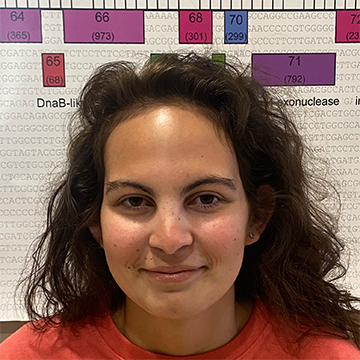Below is a summary of the abstract you submitted. Presenting author(s) is shown in bold.
If any changes need to be made, you can modify the abstract or change the authors.
You can also download a .docx version of this abstract.
If there are any problems, please email Dan at dar78@pitt.edu and he'll take care of them!
This abstract was last modified on March 28, 2025 at 3:54 p.m..

Phages are viruses which infect bacteria. Despite being the most abundant and diverse biological entities, our understanding of phage genomics and gene function is limited. Using Mycobacterium smegmatis as a host, the Fall 2023 SEA-PHAGES cohort at Coastal Carolina University isolated the bacteriophage Bellis from a mulchy flower bed in Conway, South Carolina. Bellis has both large and small clear plaque morphologies. DNA sequencing revealed that Bellis is a cluster L3 phage. Utilizing bioinformatic analysis, Bellis’ genome was annotated by identifying and assigning putative functions to all genes. After initial gene prediction using Glimmer and GeneMark, manual curation identified 126 protein-encoding genes and 10 tRNAs. Like other L3 phages, the left arm of Bellis is comprised of structural genes, while the right arm contains genes that encode DNA-interacting proteins, like transcription factors and HNH endonucleases. In addition, Bellis has a tyrosine integrase gene, which is indicative of a temperate phage lifecycle. Current work includes further bioinformatical analysis to compare Bellis with other phages and verification of a temperate lifecycle via isolation of lysogens.


